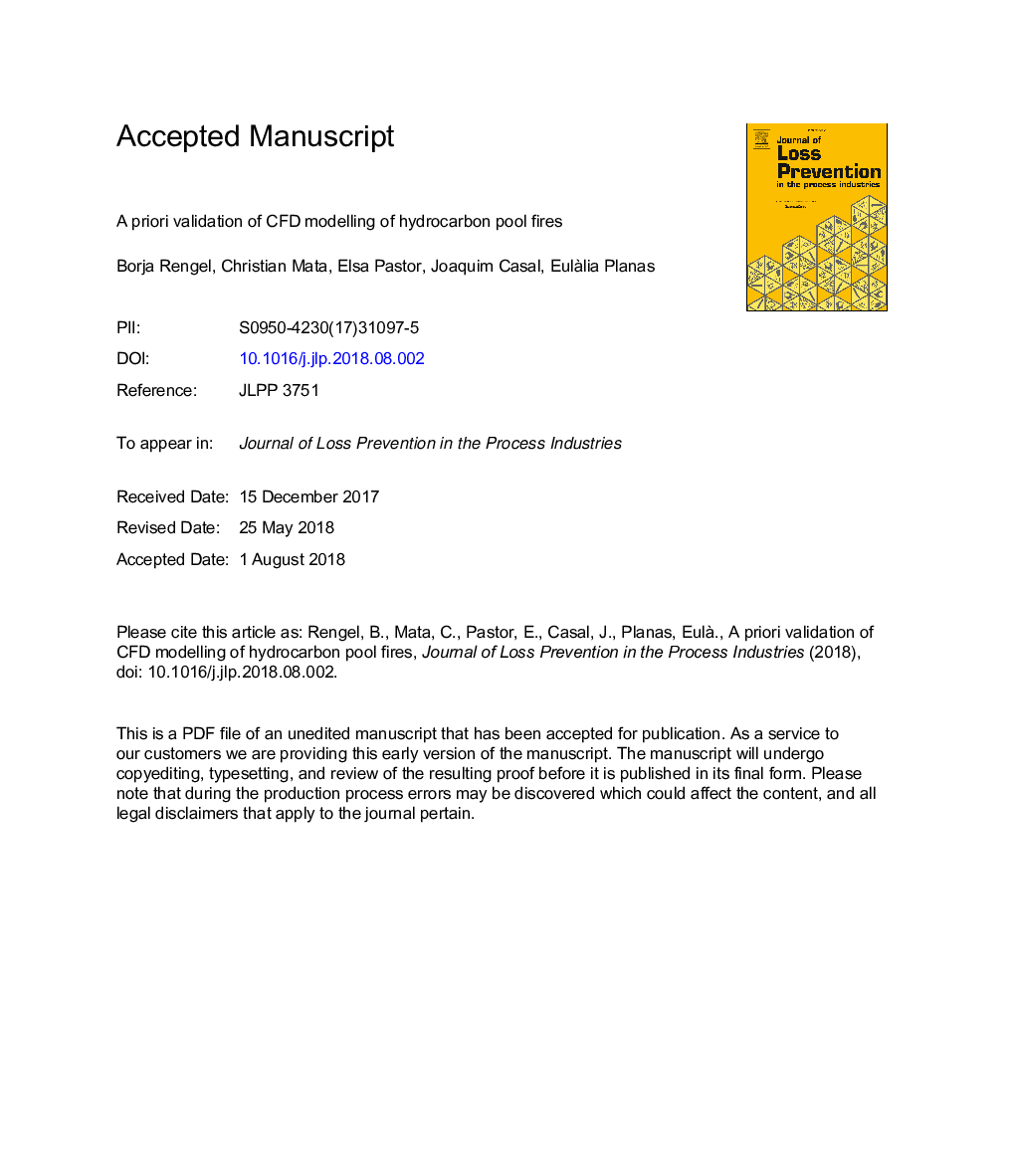| Article ID | Journal | Published Year | Pages | File Type |
|---|---|---|---|---|
| 6972734 | Journal of Loss Prevention in the Process Industries | 2018 | 25 Pages |
Abstract
This paper investigates the predictive capabilities of CFD modelling when performing a priori simulations of medium and large scale hydrocarbon pool fires. The main objective is to assess the fire effects prediction performance of two CFD codes that may be used to evaluate the hazard of hydrocarbon pool fires. FLACS-Fire and FDS codes have been used to simulate medium and large scale pool fires (1.5, 3, 4, 5 and 6â¯m-diameter) of diesel and gasoline fuels in unconfined environments. Given the notable differences between the mathematical methods applied to solve the CFD sub-models, the mesh resolution and the boundary conditions in each investigated tool, this study is not aimed at directly comparing both codes (i.e. using identical sub-models choices). However, the present CFD analysis is intended to reveal the potential of each software separately by applying the most appropriate modelling options for each tool. Based on a qualitative assessment of the predictions and a quantitative error estimation of the variables measured (i.e. flame temperature, burning rate, heat flux, flame height, flame surface, and surface emissive power), the main strengths and weaknesses of FLACS-Fire and FDS are identified when modelling hydrocarbon pool fires.
Keywords
Related Topics
Physical Sciences and Engineering
Chemical Engineering
Chemical Health and Safety
Authors
Borja Rengel, Christian Mata, Elsa Pastor, Joaquim Casal, Eulà lia Planas,
